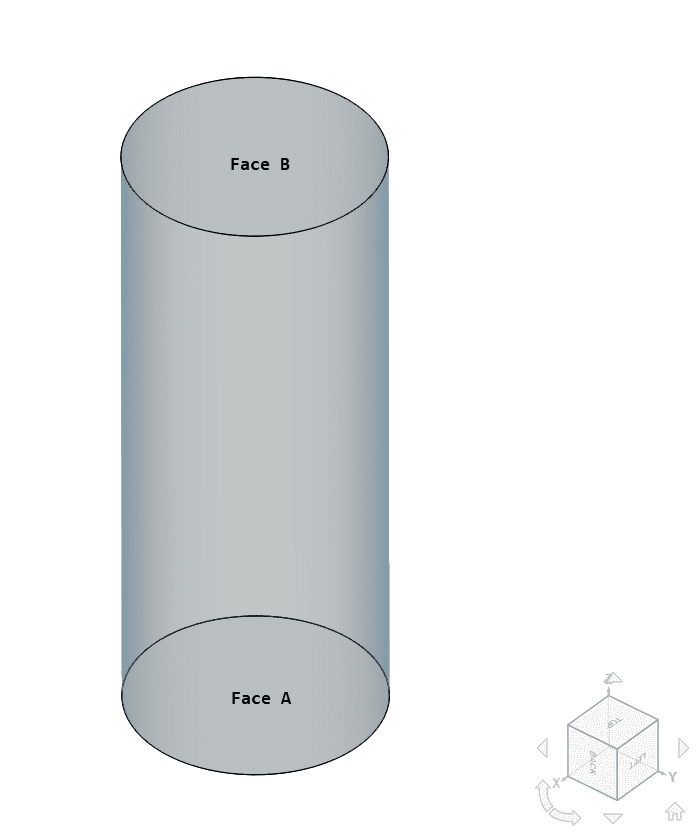Documentation
This validation case belongs to solid mechanics. The aim of this test case is to validate the following parameters:
The simulation results of SimScale were compared to the results presented in [Roark]\(^1\)
The geometry used for the case is below:

The axis of the shaft cylinder is aligned with the \(Z\) axis, with a length \(L = \) 0.5 \(m\) and a radius \(r = \) 0.1 \(m\).
Tool Type: Code_Aster
Analysis Type: Linear Static
Mesh and Element Types:
Tetrahedral meshes were computed using SimScale’s standard meshing algorithm and manual sizing. Table 1 shows an overview of the meshes in the validation project.
| Case | Mesh Type | Number of Nodes | Element Type |
|---|---|---|---|
| A | Standard | 191965 | 1st order tetrahedral |
| B | Standard | 189630 | 2nd order tetrahedral |
The second order tetrahedral mesh from case B is shown in Figure 2:
Material:
Boundary Conditions:
The analytical solutions for the rotation angle \(\theta_B\) and maximum shear stress \(\tau_{max}\) are given by the following equations:
\( \theta_B = \frac{ T L }{G J} \tag{1} \)
\( \tau_{max} = \frac{T R}{J} \tag{2} \)
\( J = \frac{\pi R^4}{2} \tag{3} \)
The computed reference solution is:
\( \theta_B = 1.9894×10^{-3}\ Rad \)
\( \tau_{max} = 31.847\ MPa \)
The plane maximum displacement \( U \) is used to compute the rotation angle through equation 4 (obtained through the cosines law):
\( \theta = ArcCos[ 1- \frac{U^2}{2R^2} ] \tag{4} \)
| CASE | \(U\) | \( \theta \) | \( \theta_{ref} \) | ERROR |
|---|---|---|---|---|
| A | 0.000198463 | 0.00198463 | 0.0019894 | -0.24% |
| B | 0.000198944 | 0.00198944 | 0.0019894 | 0.00% |
The maximum shear stress is taken from the Cauchy stress tensor, component [SIYZ]:
| CASE | SIYZ | \( \tau_{ref} \) | ERROR |
|---|---|---|---|
| A | 31.7483 | 31.847 | – 0.26% |
| B | 31.8405 | 31.847 | – 0.03% |
For both 1st order and 2nd order meshes, the results show good agreement with the analytical solution. Find below an image showing the displacement magnitude on the cylinder, for case B:
References
Note
If you still encounter problems validating you simulation, then please post the issue on our forum or contact us.
Last updated: July 21st, 2021
We appreciate and value your feedback.
Sign up for SimScale
and start simulating now